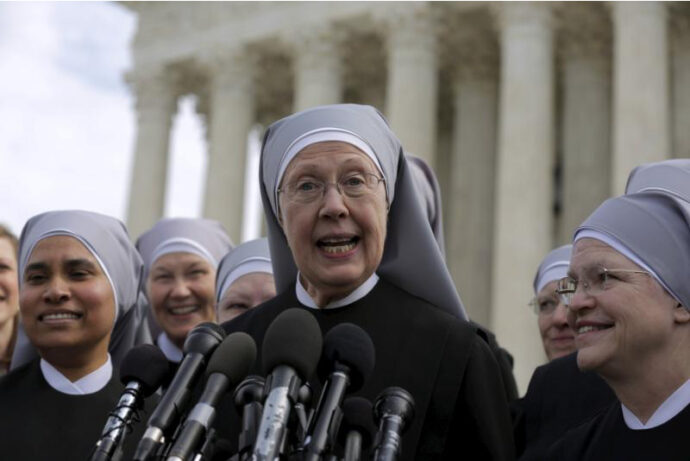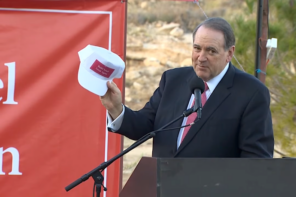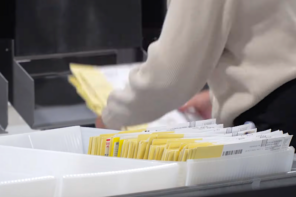It’s not surprising that the apparently Vatican-approved denouncement of the conservative Catholic-Christian alliance that has come to dominate U.S. politics ruffled some feathers. What is surprising is the sheer amount of denial and obfuscation that the article in La Civiltà Cattolic by Antonio Spadaro and the Marcelo Figueroa has engendered.
After all, as Vatican expert Massimo Faggioli told the New York Times, the article is a landmark in the history of relations between the Vatican and the U.S. church. According to Faggioli, it signals the Vatican’s recognition that the U.S. Catholic Church “has become different than mainstream European Catholicism and mainstream Latin American Catholicism” and is now in “the hands of the religious right.”
But that, according to Catholic conservatives, is a ridiculous conclusion. They argue that Pope Francis and his allies just don’t understand the traditional role of religion in politics in the United States.
Thomas Williams, the former priest who has been called Breitbart’s man in Rome, called the article “rambling” and “bigoted.” He charged that it “caricatured white southern evangelicals as well as conservative American Catholics as ignorant, theocratic, Manichean, war-mongering fanatics anxiously awaiting the apocalypse.”
He serves up the example of the Little Sisters of the Poor, the order of nuns who became the face of objections to the contraceptive mandate in the Affordable Care Act, as a counterpoint. He asks if the authors of the article “really believe that the good sisters were fighting for ‘some influence in the political and parliamentary sphere’ rather than simply asking to live according to their religious beliefs?”
So as an example of how the U.S. Catholic Church hadn’t become enmeshed in some right-wing theocratic political machine, Williams points to the Little Sisters, who have been used as a front by the Catholic bishops and the Becket Fund to push their “religious liberty” claims and amp-up right-leaning Catholic and Christian voters in exactly the manner that Spadaro and Figueroa warn about.
Also, according to Williams, there isn’t a right-wing theocratic voting bloc because, well, there are lots of churches in the U.S.:
In point of fact, the United States is one of the most religiously diverse and pluralistic countries in the world, far more than any European nation, a fact of which the authors seem woefully ignorant. Christians make up over 70 percent of the population, and while the largest single group is the Roman Catholic Church, there are literally hundreds of other Christian denominations as well as the vast world of non-denominational Christianity.
Also, says Williams, “while Spadaro and Figueroa describe the influence of religion in American public life as a recent phenomenon, nothing could be further from the truth,” going on to note the long history of the intermingling of religion and politics in the U.S. Of course, Spadaro and Figueroa didn’t discount such a history. They merely noted that the emergence of a largely electorally motivated, right-wing Catho-Christian political machine was a relatively recent phenomena.
Ross Douthat also goes with the “don’t know nothin’ about U.S. history approach” in his takedown of the article. First, however, he notes the deep political and social divides that have come to characterize the U.S. church:
Over the last decade, however, as American Christianity has weakened and American politics become ever-more-polarized, the Catholic position in the United States has become more difficult and perplexing. The Democratic Party, whose long-ago New Deal was built in part on Catholic social thought, has become increasingly secular and ever-more-doctrinaire in its social liberalism. The Republican Party, which under George W. Bush wrapped the Catholic-inflected language of “compassionate conservatism” around its pro-life commitments, has been pinballing between an Ayn Rand-ish libertarianism and the white identity politics of the Trump era.
And he is sympathetic to Spadaro and Figueroa warning against “Catholic support for the darker tendencies in Trumpism.” But, says Douthat:
…the authors’ understanding of American religion seems to start and end with Google searches and anti-evangelical tracts, and their intended attack on Trumpery expands and expands, conflating very different political and religious tendencies, indulging in paranoia about obscure theocratic Protestants and fringe Catholic websites, and ultimately critiquing every kind of American religious conservatism.
Now, for one, Spadaro and Figueroa mentioned “obscure theocratic Protestants,” namely Dominionist Rousas John Rushdoony, not to conflate him with the modern Christian right but to explain his influence on the “theopolitical vision of Christian fundamentalism” that has infected the Christian Right. Only someone willfully ignorant about the history of the twentieth century Christian right would deny the influence of Rushdoony and his thinking on the necessity of theocracy in securing a true Christian nation. Just because someone is obscure don’t mean they aren’t influential.
And, as Spadaro and Figueroa correctly note, many of the extreme stances of today’s Christian right “are based on Christian-Evangelical fundamentalist principles dating from the beginning of the 20th Century that have been gradually radicalized.”
Likewise, their criticism of “fringe Catholic websites,” i.e., the Church Militant, wasn’t to conflate it with the Christian right or to suggest that everyone on the right agrees with its radical nationalism. It was to point out one of the more extreme flowerings of the Catho–Evangelical convergence, albeit one whose “warlike and militant approach seems most attractive and evocative to a certain public” seeking evidence of a divine hand in U.S. affairs.
Most disingenuously, Douthat claims that the “post-1970s evangelical-Catholic alliance has been flawed in various ways, but it is neither theocratic nor illiberal.”
What Douthat misses, or refuses to see, is how this alliance had in fact become increasingly theocratic as it has become clear that democracy isn’t on its side. From liberalized attitudes about sex to the legalization of same-sex marriage, people seeking a state-sanctified “traditional” morality haven’t been on the winning side of history for some time. More and more it seems he only way they can get the society they want is through a theocracy, through the appointment of right-wing judges, legislatures that create new definitions of “religious liberty” that allow for the marginalization of LGBT people, and through various means of reproductive oppression.
He is also blind to the fact that the Catho-Christian Right’s participation in politics long ago jumped the guardrails of any reasonable participation as it jettisoned one gospel principle after another in an attempt to fit with the free-market precepts of the Republican Party. Case in point of how explicitly political the right has become is the news that one of Trump’s key evangelical advisors, Johnnie Moore, is seeking a meeting between the Vatican and evangelical leaders in an effort to get it to tone down its criticism of Trump in what is clearly an explicitly political parley.
Even more dubiously, Douthat claims that by condemning the explicitly political activities of the Catho-Christian Right, Spadaro and Figueroa are also criticizing Pope Francis’ forays into politics with his pronoucements on the environment, poverty and capitalism.
But they aren’t objecting to the application of Christian, gospel principles to public life. What they are objecting to is the creation of an electoral juggernaut based on a cherry picking of Catholic priorities—abortion and same-sex marriage—married to a flawed theocratic vision for America. What they are objecting to isn’t the uneasy comingling of religion and politics that for better or worse has characterized America. It’s religion used in the service of politics. And anyone standing here in the summer of 2017 who doesn’t understand how badly that has gone awry are the ones who don’t understand history.





